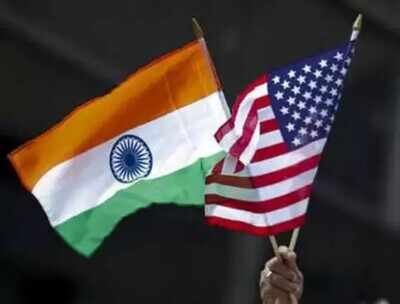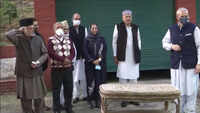
NEW DELHI: In the run-up to the 2+2 meeting between foreign and defence ministers of India and the US, the two countries are ramping up high-level defence contacts, apart from expanding the Indo-Pacific from naval cooperation to include the army.
Vice chief of Army staff, Lt Gen SK Saini will be traveling to the US this weekend (Oct 17-20) and will visit the army version of the US’ Indo-Pacific command, called INDOPACOM.
The fact that a top-level Army officer is travelling to the US despite Covid restrictions is seen as significant. It is equally important in the context of the India-China standoff in eastern Ladakh, where the Army is playing the lead role.
In the larger picture, the army vice chief’s visit is a sign that India and US’ Indo-Pacific outlook is slowly taking on a more comprehensive approach particularly in the security domain.
With the Indian Army virtually the only one in the world to be in a face-off position with the Chinese army in one of the most inhospitable stretches of territory, and holding its own, India brings its unique experience of dealing with China militarily to the Indo-Pacific table. The US’ experience is primarily in the naval domain.
The India-China conflict this year has accelerated the convergence between India and US in the security domain.
Saini’s visit, and, potentially, the 2+2 meeting, also comes just weeks before the US goes to the polls. Traditionally, India would have held back top-level interactions until after the elections. But while the 2+2 meeting is yet to be formally announced, the vice chief’s visit, sources said, is a signal that the US-India relationship has deepened beyond the political. This would have security and diplomatic implications as the Indo-Pacific gathers momentum.
Vice chief of Army staff, Lt Gen SK Saini will be traveling to the US this weekend (Oct 17-20) and will visit the army version of the US’ Indo-Pacific command, called INDOPACOM.
The fact that a top-level Army officer is travelling to the US despite Covid restrictions is seen as significant. It is equally important in the context of the India-China standoff in eastern Ladakh, where the Army is playing the lead role.
In the larger picture, the army vice chief’s visit is a sign that India and US’ Indo-Pacific outlook is slowly taking on a more comprehensive approach particularly in the security domain.
With the Indian Army virtually the only one in the world to be in a face-off position with the Chinese army in one of the most inhospitable stretches of territory, and holding its own, India brings its unique experience of dealing with China militarily to the Indo-Pacific table. The US’ experience is primarily in the naval domain.
The India-China conflict this year has accelerated the convergence between India and US in the security domain.
Saini’s visit, and, potentially, the 2+2 meeting, also comes just weeks before the US goes to the polls. Traditionally, India would have held back top-level interactions until after the elections. But while the 2+2 meeting is yet to be formally announced, the vice chief’s visit, sources said, is a signal that the US-India relationship has deepened beyond the political. This would have security and diplomatic implications as the Indo-Pacific gathers momentum.
Download
The Times of India News App for Latest India News

Coronavirus outbreak
Trending Topics
LATEST VIDEOS
India
 Congress govt funds Madrassas in Rajasthan, but opposes funding Kumbh Mela
Congress govt funds Madrassas in Rajasthan, but opposes funding Kumbh Mela  NTA to announce NEET UG 2020 result today: All you need to know
NTA to announce NEET UG 2020 result today: All you need to know  Covid-19: India's total count crosses 73 lakh mark
Covid-19: India's total count crosses 73 lakh mark  Women have right to stay at in-laws’ house: Supreme Court
Women have right to stay at in-laws’ house: Supreme Court  J&K: Ganderbal Degree College to get 72-bed girls hostel soon
J&K: Ganderbal Degree College to get 72-bed girls hostel soon  Want restoration of J&K’s rights Farooq Abdullah after all-party meeting
Want restoration of J&K’s rights Farooq Abdullah after all-party meeting
More from TOI
Navbharat Times
Featured Today in Travel
Quick Links
Coronavirus in MumbaiCoronavirus in KolkataCoronavirus in HyderabadCoronavirus in DelhiCoronavirus in BangaloreCoronavirus symptomsCoronavirus in IndiaBihar elections 2020Coronavirus NewsSolar EclipseNPRWhat is NRCCAB BillCAB and NRCRTI BillPodcast newsLok SabhaUS Election 2020CongressBJP newsUIDAIIndian ArmyISRO newsSupreme Court
Get the app



